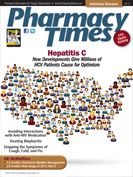Publication
Article
Pharmacy Times
Self-Care for Infectious Diseases


Mary Barna Bridgeman, PharmD Rupal Patel Mansukhani, PharmD
Case 1—Diaper Rash
PB approaches the pharmacist seeking a recommendation for a diaper rash cream. His 12-month-old son, RB, has had a horrible diaper rash for almost 2 weeks and nothing he and his wife have tried seems to be working. Upon questioning, PB explains that his son has had blistering lesions for almost 12 days that first began 24 hours after RB had a loose stool in his diaper. RB has been so uncomfortable with the rash during changes that he cries anytime they use a diaper wipe. PB has gotten so frustrated that he is changing his diaper every hour to try to reduce the rash and minimize RB’s discomfort. They have used multiple OTC products, such as A D Ointment (zinc oxide 10%, dimethicone 1%), but the rash is not resolving. PB would like to know what the strongest diaper rash cream available without a prescription is and asks for any additional recommendations for caring for his son’s irritated skin.
Answer
With diaper rash, nonpharmcologic therapy is typically recommended in combination with pharmacologic therapy to eradicate the irritation, prevent infection, and provide symptomatic relief. Nonpharmacologic therapy includes increasing the frequency of diaper changes to minimize the exposure of the baby’s skin to urine. Additionally, exposing the rash to open air as much as possible will allow for the area to stay dry and possibly heal faster. It is also recommended to avoid tight-fitting diapers to minimize the trapping of moisture within the diaper area.
Pharmacologic treatments, such as barrier creams and skin protectants, can also be used. The FDA has approved 17 ingredients for the treatment of diaper dermatitis. These ingredients include allantoin, calamine, cocoa butter, cod liver oil, colloidal oatmeal, dimethicone, glycerin, hard fat, kaolin, lanolin, mineral oil, petrolatum, topical cornstarch, white petrolatum, zinc acetate, zinc carbonate, and zinc oxide. 1 Because PB’s son has had diaper rash for almost 2 weeks with blistering for more than 7 days, he would be excluded from self-treatment. PB has also tried multiple nonpharmacologic as well as pharmacologic treatment interventions; therefore, it may be beneficial for him to see a physician to rule out the possibility of RB having a secondary yeast or bacterial infection.
Case 2—Ringworm
GT is a 38-year-old woman who comes to the pharmacy complaining of a red, round rash on her trunk. She states she just finished her certification to be a fitness instructor and has been teaching classes all day long for some extra cash. She typically teaches yoga, but lately has been teaching some aerobic exercise classes as well. GT states the rash first appeared a few days after she started working long hours. She says she has never had the rash before from yoga classes, but the aerobic classes seem to give her this red, ringlike rash. Upon the advice of her coworker, she has been keeping the area moist and covered to prevent the rash from spreading. Her coworker claims the moist environment will suffocate the rash and help eliminate it completely. She says she has tried to keep it moist and covered for a week now, but if doesn’t seem to be disappearing. Is GT a candidate for self-care? What interventions would you recommended for treating GT’s rash?
Answer
GT seems to be experiencing ringworm, a topical skin infection caused by a fungus that usually thrives in warm, damp environments. Her long hours of aerobic exercise and her friend’s recommendation to keep the area moist probably worsened the rash instead of treating it.
At this time, GT would be a candidate for self-treatment with a nonprescription antifungal. Typically, the nonprescription antifungals used to treat ringworm include clotrimazole 1%, miconazole nitrate 2%, butenafine 1%, terbinafine HCl 1%, or tolnaftate 1%. Usually creams and solutions are more effective in treating ringworm because they can be rubbed into the skin; powders and sprays tend to be less effective because they do not penetrate the skin as well.
It is also important to instruct GT to keep the area dry and free from moisture. If GT had a secondary infection, then it would be important to refer her to a physician for treatment. Other medical conditions such as diabetes may require a referral to a primary health care provider due to the slow healing process of skin infections. PT
Reference:
1. Food and Drug Administration. Skin protectant drug products for over-the-counter human use: final monograph. Fed Regist. 2003;68:33377.
Dr. Bridgeman is an internal medicine clinical pharmacist in Trenton, New Jersey, and clinical assistant professor, Ernest Mario School of Pharmacy, Rutgers University. Dr. Mansukhani is a clinical pharmacist in South Plainfield, New Jersey, and clinical assistant professor, Ernest Mario School of Pharmacy, Rutgers University.







